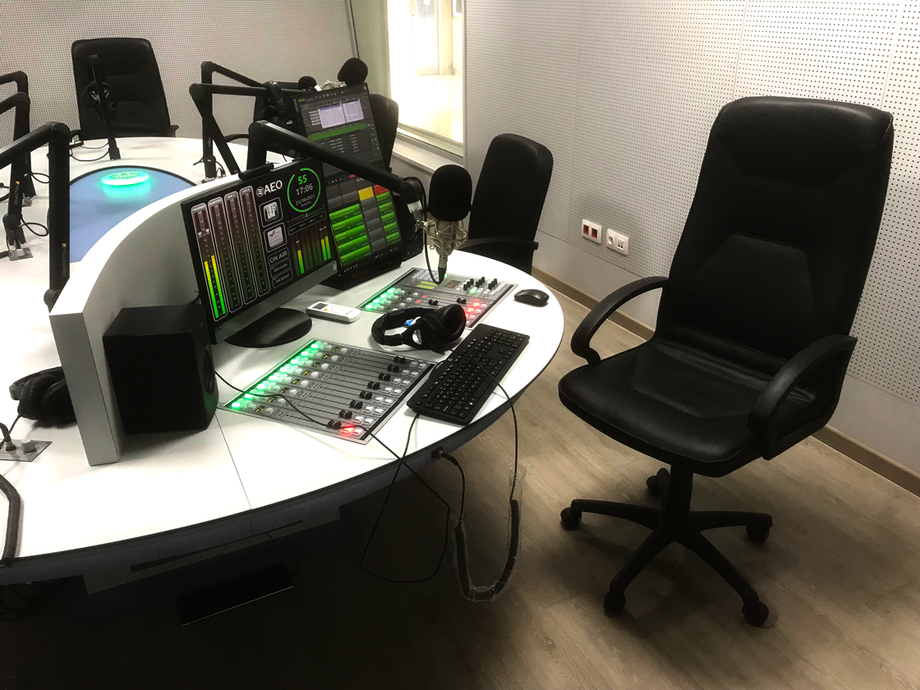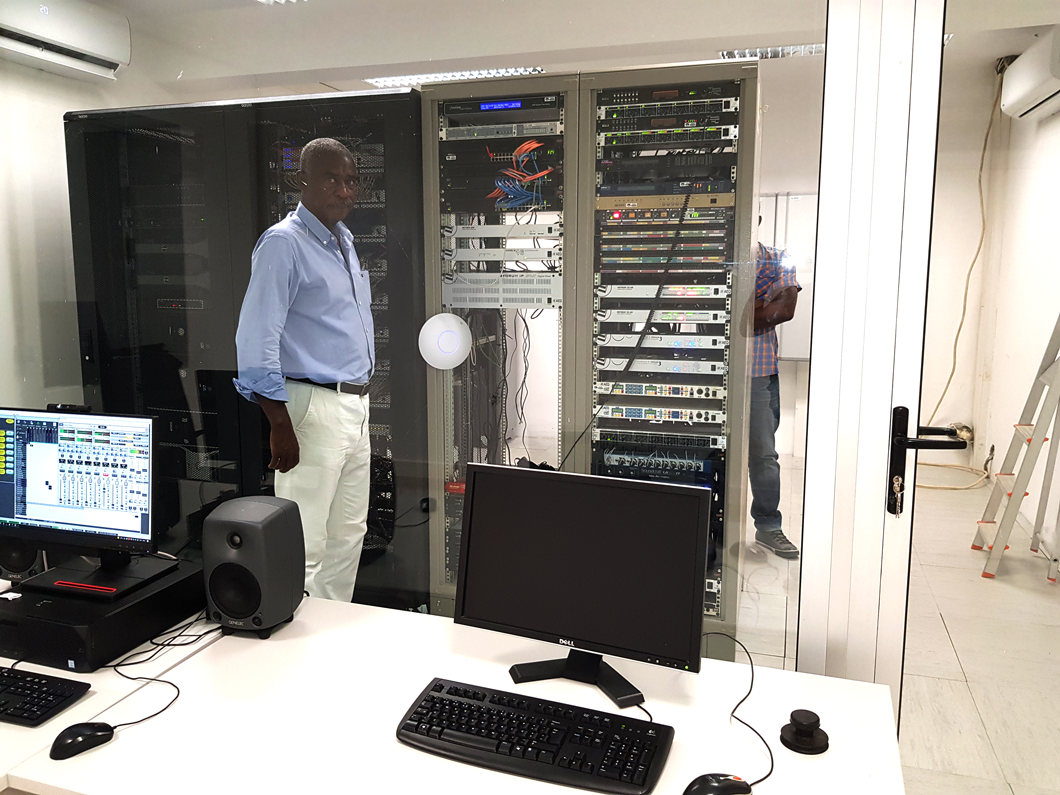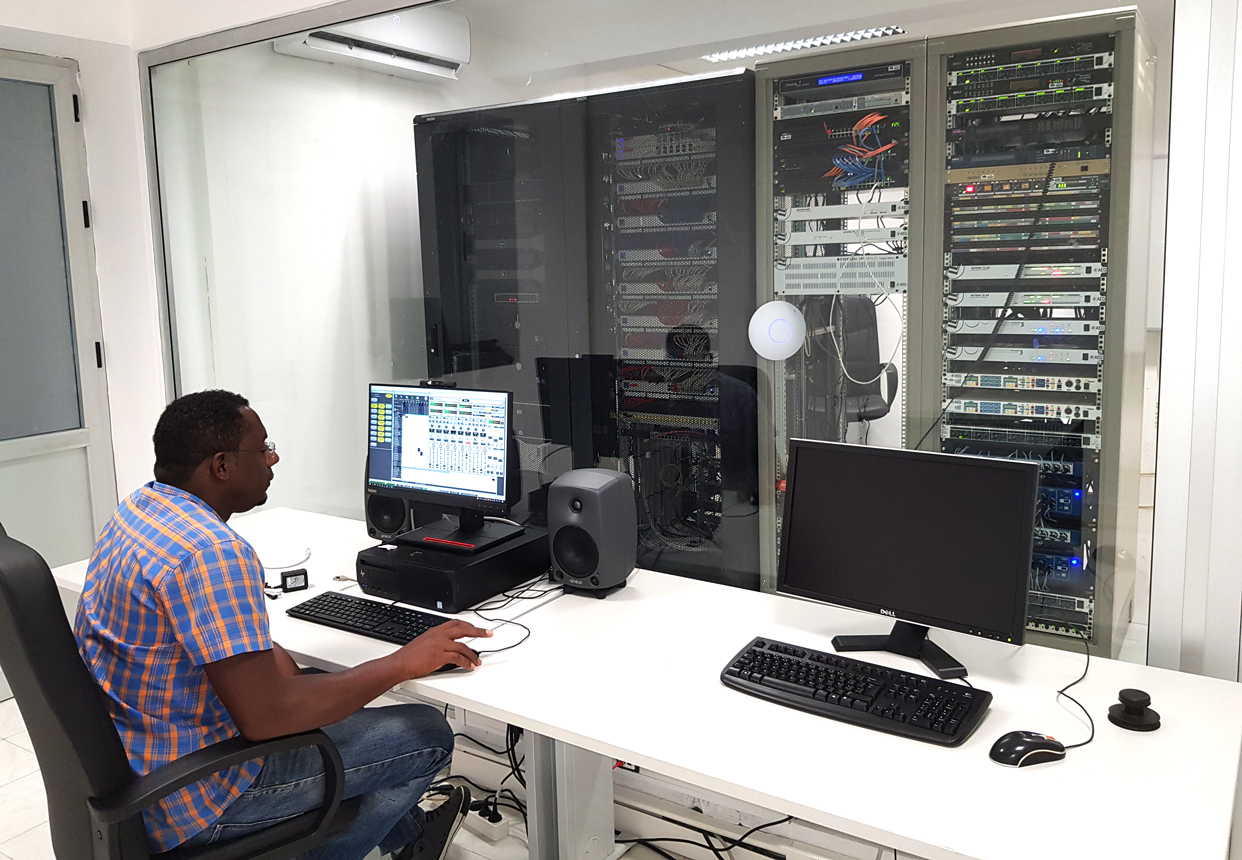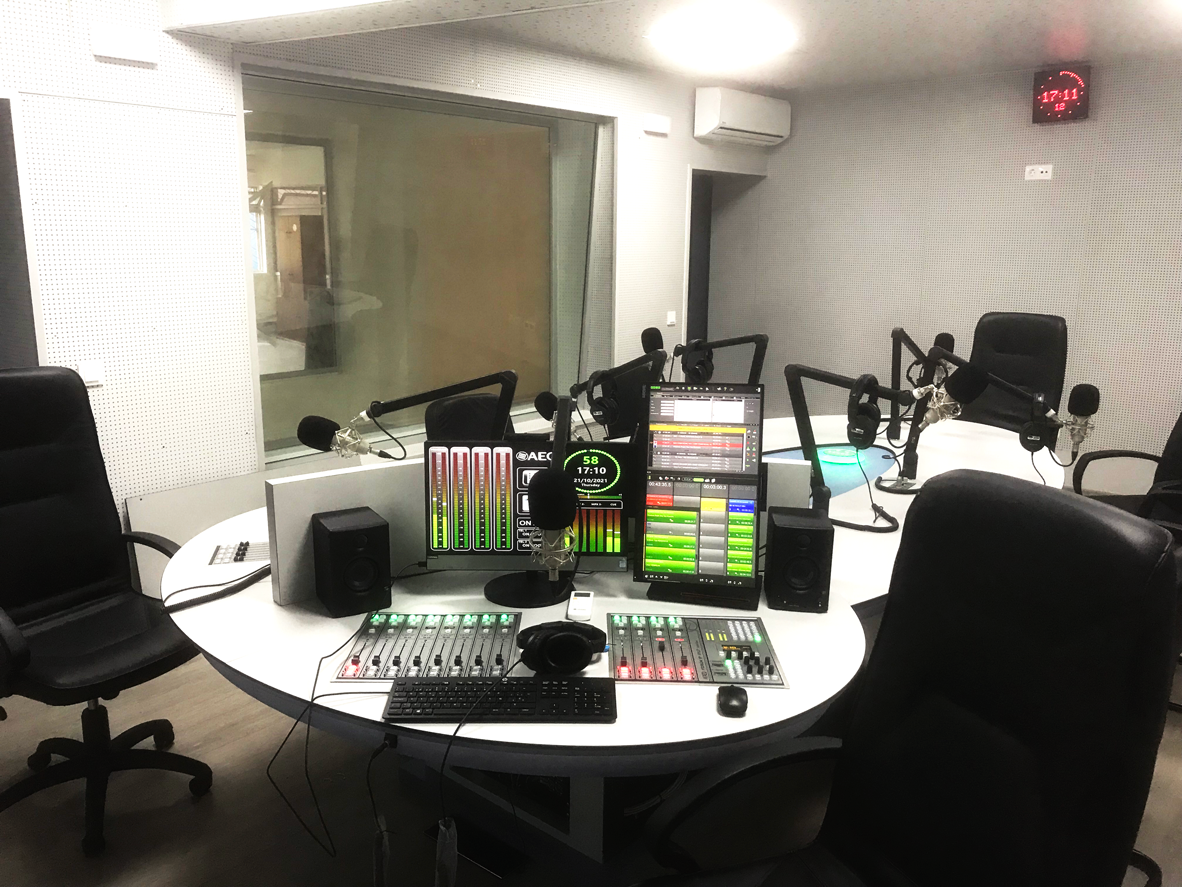New Master Control Room and ONAIR Studio in Cape Verde Radio with AEQ IP technology 03/02/2022

By Francisco Monteiro, RTC Director of Research and Planning

RCV, is the Public Radio of Cape Verde, integrated in RTC the Cape Verdean Radiotelevision, a public radio and television entity of the Republic of Cape Verde. It is headquartered in the city of San Antonio da Praia, capital of the Republic, on the Santiago island. It has five studios (the main one that has been renovated in this Project, the digital information studio, the analog production studios, multipurpose, and the one for broadcasting the second channel, the youthful Caboverde+. It also has a technical center, also renovated in this Project. Two products are broadcast from this main production center: the main channel and the youth channel.
At the end of 2021, RCV has inaugurated a digital ONAIR studio and MCR. This infrastructure will provide the company's professionals with better working conditions. An alliance with the Spanish company AEQ for the technical material, MTCV for the electrical part and MGO for the IT equipment, consolidates the entrance of the national radio in the digital world and allows greater proximity to the listener.
It is a broadcasting studio equipped with a sixteen-channel digital console, with workstations to operate the Radio Assist platform, and systems for monitoring and managing Outside Broadcastings (OB). Peripheral systems are added that help producers, animators and journalists to carry out broadcasts.
In this article we are going to describe the technical and operational characteristics of this facility that began to be defined in 2018 and has been carefully developed from mid-2019 to the end of 2021.
Requirements
It was about meeting the following requirements:
• Current technology, digitally treated audio, IP connectivity.
• Technical update project for the Praia center, approachable in parts.
• Broadcast equipment of the MCR, main studio and equipment for OB.
• Not produce emission cuts by the Project.
• Have redundancy with conventional technology.
Methodology
We found out about the technological level and equipment available on the market, visiting some reference facilities in Lisbon, and contacted an expert engineer in this equipment, Engineer Alberto Santos, who developed a similar project in the TSF studios in Lisbon, to help us with a safe implementation. With him we studied the different options, we evaluated their cost in relation to the acceptable budget, we selected a main supplier, AEQ, and checked with him the feasibility of a first phase and the guarantee of leaving the system open to developing successive phases at different times, depending on the availability of resources.
Approach
• Prepare an IP infrastructure to support the installation, and design an update of the MCR based on this infrastructure. Focus the bulk of the installation on works on two new racks in the technical center that would come pre-wired from the factory. In this way we would guarantee a safe transition of technology, connecting the current studies to the new technical center.
• Disassemble the main studio and redo it technically and aesthetically. Acquire digital equipment for him. Install it. Install the engine or Core of the new console in the technical center, and connect it in Audio over IP.
• Acquire new communications and OB systems, with IP technology. Its stationary equipment will come installed in the same racks of the technical center.
Technical Center

To create a redundancy circuit for the Dante AoIP, the analogue and digital inputs and outputs of the main studio and the rest of the studios have been incorporated into four bantam patch panels with 2 × 48 connectors, wired to a Krone strips.
To give the audio to the transmitter in the best conditions, an Orban FM 5700i processor has been incorporated.
To communicate with OB units and other external services, there are three Venus 3 dual stereo audiocodecs, with local AoIP Dante input and output.
An AEQ Systel IP 16 is installed, with 16 lines and an AEQ Systelset+ terminal that is initially used either from the main studio or from the CTP itself. If after an internship stage we wish to share with the rest of the studios, a simple IP phone and the free Systel IP Classic software application can be installed in each of them, or a Systelset+ Terminal can be added for each studio, which incorporates the telephone and the application in the terminal itself
The AEQ Forum IP Split console engine in the main studio has been installed in the CTP. This simplifies the wiring and gives the system more security, since it guarantees the best climatic treatment and constant supervision through the Virtual Forum application installed in the CTP workstations.
All this is integrated into two new 42-inch Racks pre-installed and pre-wired from the factory, which have been accompanied by two HP Z2 40-type workstations for technicians as well as self-powered Genelec monitoring speakers. A KVM control makes the supervision of two control technicians more flexible over the CTP equipment.
Main Studio

The Console
In the studio there is an AEQ Forum IP Split console with four Fader modules, 16 faders in total.
The installed configuration has eight microphone inputs in addition to the self-monitoring one, leaving two spare, eight analogue inputs and eight outputs, four AES/EBU stereophonic inputs and four outputs, a telephone hybrid module that will only be used in emergencies since the the system has a Systel IP 16 IP telephony system. The main connectivity with the IP network is developed through a 32-channel IP audio module. Redundant power supply, Forum Screen operation assistant software application on a touch screen. The console has also been licensed to use the Forum Virtual software application, which allows remote control and maintenance.
Furniture and ergonomics
The technical equipment is installed in a 12U floor rack.
The furniture was built by AEQ with our requirements. In addition to the equipment rack, the worktop has been designed in which it is distinguished:
• A space for the controller, which contains the control module, three fader modules, the control assistant touch screen, the screen, monitor and computer mouse of the “Live Assist” automation system. This monitor is installed in a vertical position, (screen longer than wide) to make better use of the space on the screen.
• A space for the main presenter, in which there is a console faders module, since in our way of doing radio, the main announcer deals with regulating microphones and main signal sources.
• A space for five guests
Each of the seven workstations on the worktop has a pantograph-type aluminum microphone stand, with an AEQ CM 179 switchable directivity large-diaphragm condenser microphone, and AKG headphones. Except for the controller, all other users have an individual microphone and headphone connection plate, which allows the user to self-regulate the headphone listening level. There is a headphone distribution amplifier in the rack of the MCR.
There is a Studiobox desktop signalling box, which also allows us to activate the cough cut.
On the wall of the studio there are two synchronized clocks, and a screen of the Live Assist system, so that the main announcer follows the progress of the programming
Other equipment
In this phase of the work, other important improvements have been incorporated in the radio equipment:
For external broadcasts, 7 AEQ Alio audiocodecs with a 4-channel mixer and 3G/4G Router/MODEM have been acquired, and a simpler one, Talent, for a single microphone.
So that all the stations of the Live Assist system have their audio directly connected to the IP network, 8 Dante Virtual Soundcart applications have been supplied that enable audio inputs and outputs on each PC through the IP network
Peculiarities of the Forum IP console
The AEQ FORUM console in the main studio has four 4-fader modules. It also has a control and monitoring module with 20 programmable keys, as well as precision VU meters, output for external CUE loudspeakers, control and speaker monitoring sections and an intercom section.
It is accompanied by an external touch screen with two software applications, FORUM Screen to facilitate the operation, including VU meters, correlation meter and screens to facilitate the programming and execution of processes. The Forum VIRTUAL software was installed at the CTP to replicate the console's control surface on a PC, for complete management of the console's surface remotely.
The common I/O part of the console engine has input and output for the controller's microphone and headphones. The rest of the headphones are amplified and distributed in an external equipment. The remaining microphones are connected to mic/line cards in the console engine.
Peculiarities of the way of working of the main studio
It works as a studio for live or recorded shows with guests. In this way the controller has 3 modules of 4 faders. It also has the control and monitoring module, the external CUE speakers, the external touch screen with the two aforementioned applications: FORUM Screen and Forum Virtual. The host of the program has a fourth module with 4 faders, so that he can open and close the main microphone channels, the rest of the microphones, and the broadcast automation channels (computer with music and jingles). By configuration, these channels are also accessible to the controller who can manage them in parallel.
The Project
The development of the Project has occurred throughout the 2nd half of 2020 and complete 2021, in parallel with the acoustic and aesthetic conditioning of the studio. The basis of the work has been to keep the services active from the rest of the studios, while the changes were produced in a planned way.
The entire project has been led by AEQ's sales manager for the PALOP countries, Mr. Antonio Piçarra, in coordination with RCV's technical services and the consultant, Mr. Alberto Santos. The result is an installation with the high performance and robustness required of a state public network. It must be able to respond to the qualification of "reference installation", possibly the most complete and current technically developed in the Portuguese-speaking countries in 2021.
For more information on RCV Rádio Cabo Verde, visit https://www.rtc.cv/rcv
To see the news of the inauguration in the Jornal da Tarde on Caboverde television, go to https://www.youtube.com/watch?v=WPfsKoPOsr4








